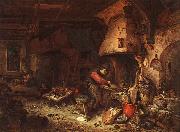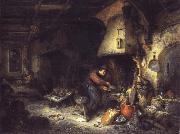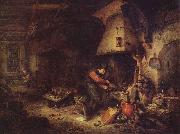Wholesale Oil Painting Reproductions No Minimum and Door to Door! |
|||||||||||
|
|
|||||||||||

|
|||||||||||
|
|
|
||||||||
All Anthony Van Dyck Oil Paintings |
||||||||
|
|
||||||||
|
|
||||||||
|
Artist Introduction: Dutch
1599-1641
Anthony Van Dyck Locations
Flemish painter and draughtsman, active also in Italy and England. He was the leading Flemish painter after Rubens in the first half of the 17th century and in the 18th century was often considered no less than his match. A number of van Dyck studies in oil of characterful heads were included in Rubens estate inventory in 1640, where they were distinguished neither in quality nor in purpose from those stocked by the older master. Although frustrated as a designer of tapestry and, with an almost solitary exception, as a deviser of palatial decoration, van Dyck succeeded brilliantly as an etcher. He was also skilled at organizing reproductive engravers in Antwerp to publish his works, in particular The Iconography (c. 1632-44), comprising scores of contemporary etched and engraved portraits, eventually numbering 100, by which election he revived the Renaissance tradition of promoting images of uomini illustri. His fame as a portrait painter in the cities of the southern Netherlands, as well as in London, Genoa, Rome and Palermo, has never been outshone; and from at least the early 18th century his full-length portraits were especially prized in Genoese, British and Flemish houses, where they were appreciated as much for their own sake as for the identities and families of the sitters. |
||||||||
|
|
||||||||
|
An Alchemist Painting ID:: 1073 |
1661 National Gallery, London |
|||||||
Height Width |
INS/CM Quality |
|||||||
|
X |
| |||||||
|
|
||||||||
All Ostade, Adriaen van Oil Paintings |
||||||||
|
|
||||||||
|
|
||||||||
|
Artist Introduction: Dutch Baroque Era Painter, 1610-1685
Painter, draughtsman and etcher. According to Houbraken's rather unreliable biography, he was a pupil concurrently with Adriaen Brouwer of Frans Hals in Haarlem. Hals influenced him very little, whereas Brouwer, who was described as 'known far and wide' as early as 1627, had a decisive influence on the evolution of Adriaen van Ostade's always idiosyncratic portrayal of peasant life. The first documentary mention of Adriaen van Ostade as a painter is in 1632 (Schnackenburg, 1970). Most of his paintings are signed and dated, the earliest firmly dated example being the Peasants Playing Cards (1633; St Petersburg, Hermitage). |
||||||||
|
|
||||||||
|
|
An Alchemist Painting ID:: 43208 |
mk170
1661
Oil on oak
34x45.2cm
|
||||||
Height Width |
INS/CM Quality |
|||||||
|
X |
| |||||||
|
|
||||||||
All Adriaen van ostade Oil Paintings |
||||||||
|
|
||||||||
|
|
||||||||
|
Artist Introduction: Dutch Baroque Era Painter, 1610-1685
Painter, draughtsman and etcher. According to Houbraken's rather unreliable biography, he was a pupil concurrently with Adriaen Brouwer of Frans Hals in Haarlem. Hals influenced him very little, whereas Brouwer, who was described as 'known far and wide' as early as 1627, had a decisive influence on the evolution of Adriaen van Ostade's always idiosyncratic portrayal of peasant life. The first documentary mention of Adriaen van Ostade as a painter is in 1632 (Schnackenburg, 1970). Most of his paintings are signed and dated, the earliest firmly dated example being the Peasants Playing Cards |
||||||||
|
|
||||||||
|
|
An alchemist Painting ID:: 78527 |
Date 1661
Medium Oil on oak panel
Dimensions 34 x 45.2 cm (13.4 x 17.8 in)
cyf |
||||||
Height Width |
INS/CM Quality |
|||||||
|
X |
| |||||||
|
|
||||||||
|
Prev Next
|
||||||||
|
|
||||||||
|
Related Paintings to Adriaen van ostade :. |
||||||||
|
|
||||||||
|
CONTACT US |



